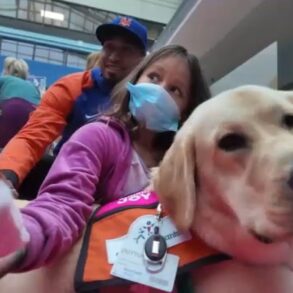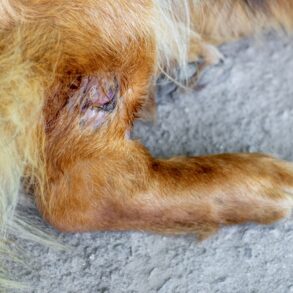
You know that feeling, when you lock eyes with a pooch and feel an unspoken connection? Well, it’s not just a feeling, it turns out. Experts have found out that human and canine brains sync up in these moments, proving we share a more profound connection with dogs at a neurological level.
Researchers in China have broken new ground, discovering a unique inter-species neural synchronization between humans and dogs. The research builds upon past studies that show similar brain activity synchronization among humans, particularly when they communicate or work together.
Brain activities of dogs and humans
The research team, led by biologist Wei Ren from the Chinese Academy of Sciences, employed a set of ingenious experiments to uncover this phenomenon.
Teams of human-dog pairs were put together and had their brain activities recorded. To do so, electrodes were placed over their heads. These pairs then engaged in nonverbal communication such as mutual gazing, or a friendly pat.
Test and control
In one set of tests, the human-dog duos interacted with each other, while during other tests they shared the same space but did not interact.
The researchers noticed an increase in inter-brain correlations in the frontal and parietal regions of the brain during the mutual gaze.
Frontal and parietal brain regions
In human brains, joint attention is associated with activity in both the frontal and parietal regions. Previous research has shown that human frontal lobe activity increases when we pet our dogs, signaling emotional engagement and focused attention.
However, it was unclear whether similar activity was happening in dogs’ brains. The study has finally shed light on this unknown.
Human and dog brains sync up
To pinpoint whether the human or dog was initiating the neural sync, the researchers used a unique mathematical algorithm to analyze the data.
The results indicated that it was the human brains that led this harmonized neural activity — revealing that the more we interact, the stronger our bond grows.
When participants were asked to simultaneously pet the dogs and gaze into their eyes, the study found even greater connectivity in the inter-brain activity.
“We observed that inter-brain correlations in frontal and parietal regions dramatically increased during mutual gaze,” noted the study authors.
Do dog brains mirror humans?
Interestingly, the study has implications beyond just understanding our bond with dogs. Experts hypothesize that social cognition deficits found in autism spectrum disorder (ASD) might result from diminished brain synchronization.
To test this, the team repeated the experiments, but this time with dogs that exhibited similar characteristics to humans with ASD.
In this new set of tests, the human-dog pairs showed lessened synchronization, which suggested reduced joint attention.
LSD and neural synchronization?
Diving deeper into the ASD connection, dogs with ASD-like characteristics were given a dose of LSD. This drug has been known to enhance social behavior in mice in past studies.
Interestingly, the LSD seemed to improve the dogs’ synchronization with their paired humans in this study.
Role of oxytocin – the bonding hormone
Oxytocin, often dubbed the “love hormone,” plays a crucial role in establishing social bonds, including those between humans and dogs.
This hormone is released in response to close interactions and has been shown to promote trust and social connections. The study further revealed that both human and dog brains experience increased oxytocin levels during mutual interactions, such as petting and eye contact.
This hormonal surge not only strengthens the emotional connection but also supports the neural synchronization observed in the experiments.
The findings highlight the biological underpinnings of the human-dog bond and suggest that oxytocin might be a key player in facilitating the enhanced inter-species neural connectivity.
Broader implications of the study
While more extensive research is called for, this study contributes significantly to our understanding of the social deficits associated with ASD. It suggests that such dogs, along with studying the brains of humans, could provide valuable insights into the neural mechanisms underlying these social deficits.
The research also opens up the possibility of using inter-brain activity as potential biomarkers for diagnosing ASD. This pioneering work could lead to the development of specially engineered, non-hallucinogenic versions of LSD to correct social deficits.
The study is published in the journal Advanced Science.
—–
Like what you read? Subscribe to our newsletter for engaging articles, exclusive content, and the latest updates.
Check us out on EarthSnap, a free app brought to you by Eric Ralls and Earth.com.
—–
This post was originally published on this site be sure to check out more of their content.










































